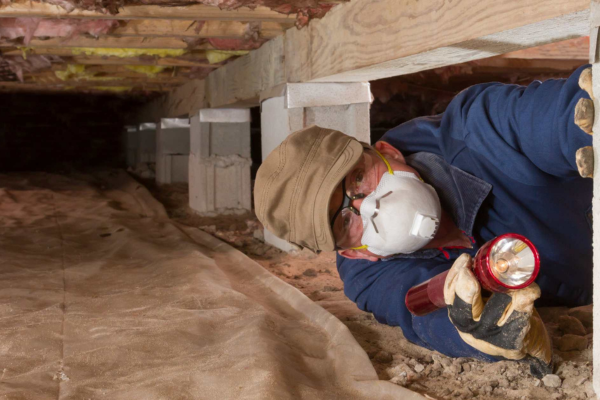Given the area’s unique environmental challenges, understanding the repair process for pier and beam foundations is crucial for homeowners in Houston. In this detailed guide, we at Allied Foundation will take you through each step of the process, explaining the techniques used, common issues encountered, and how to ensure a long-lasting foundation repair. Whether you are facing current foundation problems or just want to be prepared, this guide will provide valuable insights.
Understanding Pier and Beam Foundations for the Houston Area
Pier and beam foundations use vertical piers or columns that support horizontal beams. These beams then support your home’s floor structure. This setup creates a crawl space underneath your home, making it easier to access for repairs and maintenance. However, due to Houston’s expansive clay soils and moisture variations, these foundations can experience issues such as shifting, moisture damage, and deterioration over time.
Signs That Your Foundation Needs Repair
Recognizing early signs of foundation issues can help prevent more extensive and costly repairs:
- Uneven or Sloping Floors: This may indicate that the beams or piers have shifted or deteriorated.
- Cracks in Walls or Ceilings: Look for cracks where walls meet ceilings, especially above doors and windows.
- Doors and Windows Sticking: If doors or windows begin to stick or fail to close properly, it could be due to foundation shifts.
- Visible Pier or Beam Damage: Check the crawl space for any obvious signs of wood rot, termite damage, or dislodged piers.
- Moisture in the Crawl Space: Excessive moisture can lead to wood rot and mold, which weakens structural components.
Initial Assessment and Planning for Pier and Beam Foundation Repair
The repair process begins with a thorough assessment conducted by professionals like those at Allied Foundation. This evaluation involves:
- Inspecting the Crawl Space: Technicians will assess the condition of piers, beams, joists, and overall crawl space environment.
- Identifying the Problems: Determining whether issues are due to moisture, soil movement, pest infestation, or other causes.
- Creating a Repair Plan: Based on the assessment, a detailed plan is developed, tailored to address specific issues and restore structural integrity.
The Repair Process:
- Preparing the Work Area:
- Ensuring safety and accessibility in the crawl space.
- Removing debris and any obstacles that might hinder the repair process.
- Addressing Moisture Issues:
- Installing or improving drainage systems to prevent future water accumulation.
- Applying vapor barriers or using dehumidifiers to control moisture levels.
- Stabilizing and Repairing Piers:
- If piers have shifted or sunk, they may be straightened or replaced. New piers might be added to distribute the load more evenly.
- Techniques like mudjacking or installing helical piers can be used to correct deeper soil issues affecting the piers.
- Repairing or Replacing Beams and Joists:
- Damaged beams and joists are either reinforced or replaced. This step is critical to ensure the floor and walls are properly supported.
- Using treated wood or metal beams can enhance the longevity and durability of the repair.
- Leveling the Home:
- Once the structural components are stabilized, the house is carefully lifted to its original level. This process must be done gradually to avoid causing additional damage.
- Ensuring the home is level is crucial for preventing future structural issues.
- Final Adjustments and Cleanup:
- After the repairs are completed, final adjustments are made to ensure everything is stable and aligned correctly.
- The area is cleaned, and all tools and materials are removed.
- Quality Assurance and Follow-up:
- A final inspection is conducted to ensure all work meets the highest standards.
- Homeowners are advised on signs of potential issues and ongoing maintenance tips to ensure the longevity of the repairs.
Post-Repair Considerations For Pier and Beam Home
After repairs are completed, it’s important to monitor the foundation regularly and maintain a routine that prevents future problems:
- Keep the soil around your home consistently moist to prevent drastic soil shrinkage or expansion.
- Regularly check the crawl space for signs of moisture or new damage.
Repairing a pier and beam foundation can be a complex process that requires professional insight and precision. By understanding each step of this process, homeowners can better prepare for the undertaking and ensure their home remains safe and stable. At Allied Foundation, we are committed to providing top-quality repairs and outstanding customer service. For more information or to schedule an assessment, visit our website atAllied Foundation.



